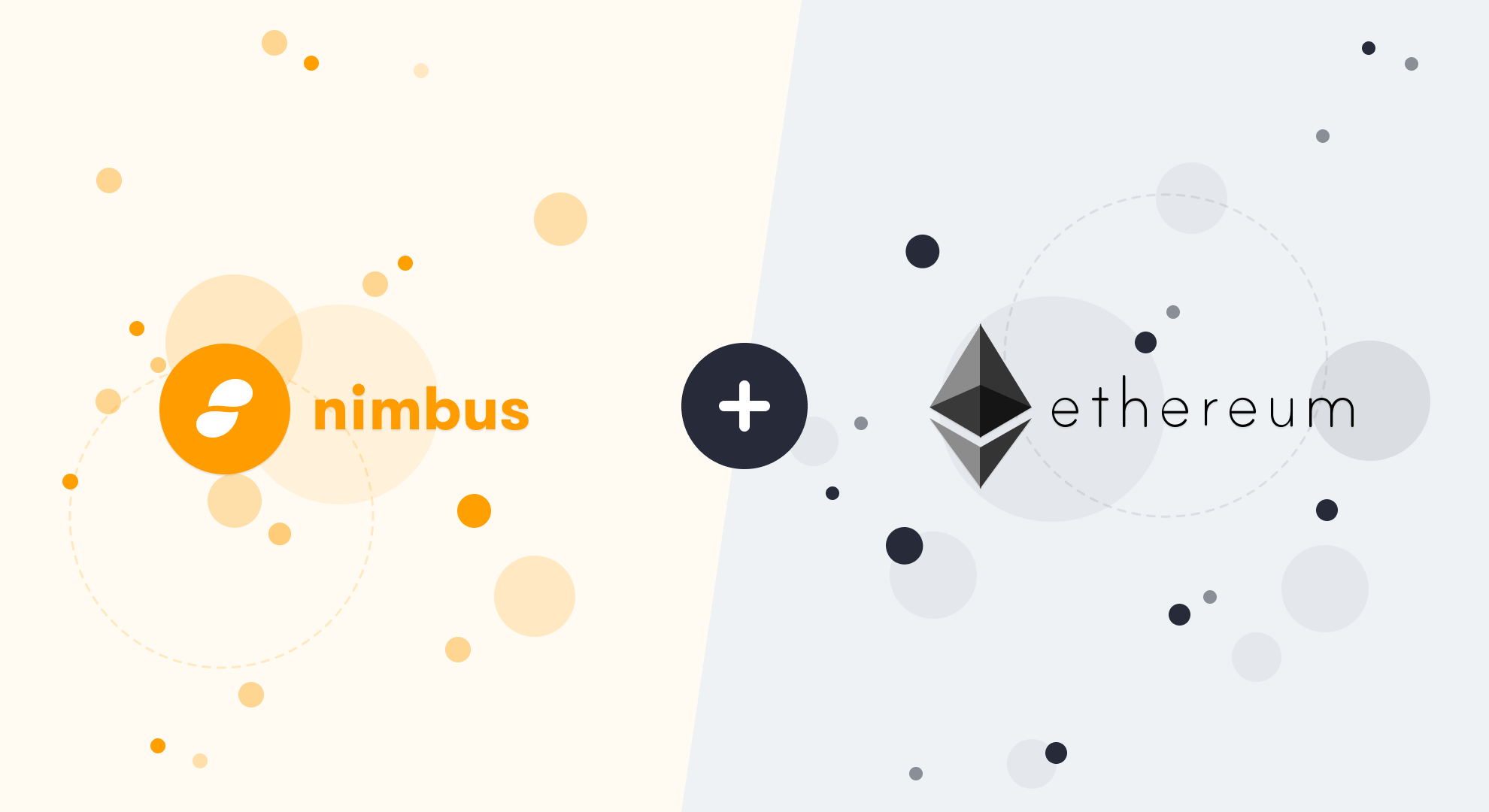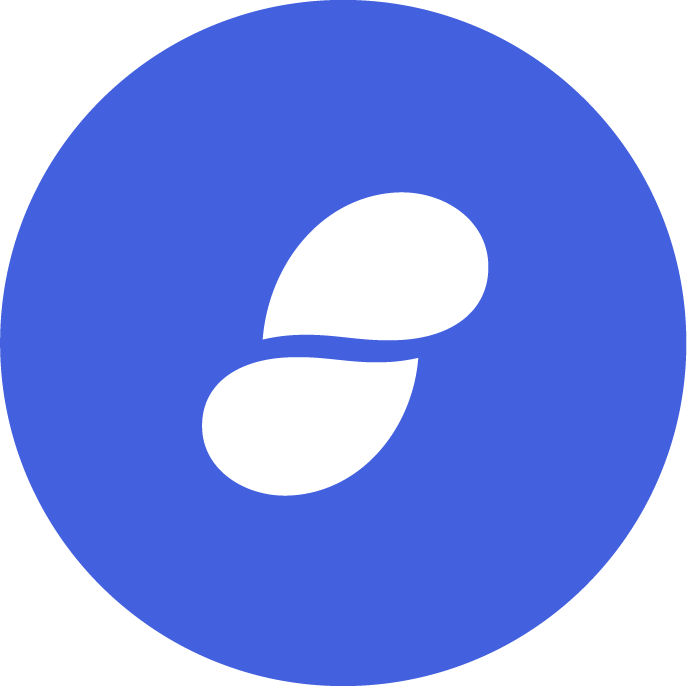In the 4th wave of their scalability research and development subsidy program, The Ethereum Foundation has issued a grant of $500k to the Status Nimbus team to continue R&D on the Ethereum 2.0 client – Nimbus.
A number of challenges face the mass adoption of Ethereum including interoperability, intuitive user experiences, and education of a non-technical audience to name a few. However, perhaps the single greatest technical challenge standing in the way of Ethereum (and blockchain technology in general) and mass adoption, is scalability. Currently, a typical blockchain design requires every node in the network to process every transaction. This results in a less than desirable ~15 transactions per second compared to 45,000 processed by Visa, leaving much work being done on this front.
Fortunately, the teams working day and night to solve these issues are supported through grants programs such as the Ethereum scalability research and development subsidy program. The Ethereum Foundation works to identify promising teams and ideas to support through technical mentorship, collaboration and funding–ensuring important knowledge sharing and continuance of work. Status and the Nimbus team are honored to be recipients of one of latest Ethereum Foundation scalability research grants.
This grant marks an important moment for the team as it will enable focused development and indicates the confidence and backing of the Foundation as we continue down our defined path. The Nimbus team has been working on this Eth2.0 implementation since March of this year and we are pleased that the work has now reached a place that warrants such a grant. Ultimately our goal is inline with that of the Foundation – the mass adoption of Ethereum.
WHAT IS NIMBUS?
As Vitalik stated in a blog post from January 2, 2018:
“There are two main paths to improving blockchain scalability. The first (“sharding”) involves creating better-designed base-layer blockchain protocols, which still maintain most of the desired decentralization and security properties of a blockchain that we see in the simple designs available today but only require a small percentage of nodes to see and process every transaction, allowing many more transactions to be processed in parallel at the same time. The second involves creating “layer 2” protocols that send most transactions off-chain and only interact with the underlying blockchain in order to enter and exit from the layer-2 system and in the case of attacks on the system.”
Nimbus falls into the first category as it is a research project and a client implementation for sharding, light clients, and next-generation Ethereum technologies addressing the concerns of scalability and wide access. There is great potential for Ethereum 2.0 to live in embedded systems, thus we are designing Nimbus to perform well on IoT and personal mobile devices, including older smartphones with resource-restricted hardware. We also aim to make Nimbus extensible, configurable, and modular. A client that is modular enough to allow for rapid iteration and implementation of the research being done in terms of scaling will, we feel, advance greatly the goals of Ethereum as a decentralised ecosystem.
Nimbus is written in Nim, a lightweight programming language well suited to running efficiently on resource-restricted devices. The Nim language delivers safe and performant code on any platform with a C compiler available.
FUTURE PLANS
While we have be steadily making progress on Nimbus since March, 2018, the grant from the Ethereum Foundation enables us to focus on the following key topics.
- Translating the latest Ethereum 2.0 research like BN curves, BLS signatures and RANDAO games into practical, performant and reusable libraries to provide fertile exploration ground for further R&D
- Ensure the design of Nimbus as a common good with liberal licensing to allow the widest deployment of Ethereum 2.0 possible
- Explore the technologies like libp2p and mesh networking, broadening the reach of Ethereum to restricted networks and limited connectivity setups
COLLABORATION IS KEY
Focused development is only one benefit of receiving this prestigious grant. It brings the Nimbus team closer not only to the Ethereum Foundation, but also the other brilliant teams and recipients of the scalability research and development subsidy program. This batch of grants marks the 4th wave in a series of funding which has seen The EF provide more than $11M in support to 52 projects since early 2018 (Waves I, II, and III). Grantees from previous waves focused on scalability include:
- L4 Research – Scalability Grant – $1.5M. State channels research.
- Prysmatic Labs – Scalability Grant – $100K. Sharding implementation.
- Barcelona Supercomputing Center – Scalability Grant – $50K. Sharding simulation.
- Plasma Taiwan Dev – Scalability Grant – $25K. Plasma implementation.
- Turbo Geth – Scalability Grant – $25K. Geth optimization.
- Perun – $250K. State channels R&D.
- PISA (by Patrick McCorry et al.) – $250K. State channels R&D.
- Sprites Implementation (by Enuma) – $200K. Payment channels implementation.
- General Computation on Plasma (by Parsec Labs) – $50K.
- Plasma implementation.Plasma (by Kyokan) – $50K.
- Plasma implementation.Plasma (by Fourth State) – $32K. Plasma implementation.
- StarkWare – $4M with 6K ETH Performance-based Bounties. Development of standards report and production-quality software for optimized STARK-friendly hash functions and toolingForce Move Game Framework – $300K.
- Force move games state channel framework
- Harmony – $90K. Minimal sharding and random beacon chain
Grantees are required to actively participate in the weekly "Eth2.0 Implementers" calls as well as the release of public updates, at least once a month. As an entirely open source project, we see great benefit in knowledge sharing and collaborating with the other recipients.
GET INVOLVED
We are entirely open source and encourage contribution from those who want to get involved. Lear more about Nimbus, the team and ways to get involved on our website.
Check out our documentation and repos on github.
The grant enables us to bring on more passionate core contributors. See our open roles here
Join the conversation on gitter








